Reduced Linear Constrained Elastic and Viscoelastic Homogeneous Cosserat Media as Acoustic Metamaterials
Abstract
1. Introduction
2. Model and Basic Laws
2.1. Constitutive Equations for the Linear Elastic Constrained Reduced Cosserat Media
2.2. Isotropic Elastic Model
2.3. Elastic Model with the Simplest Anisotropic Coupling Term (Axial Symmetry with Axis )
2.3.1. Special Directions of Wave Propagation
2.3.2. Mixed Wave
Summary for the Elastic Models
- there is an infinite bandgap above the boundary frequency for the shear waves in both models and above a lower frequency , which depends also on the anisotropy and propagation direction, for the slower mixed wave in the considered anisotropic case.
- compression wave in the isotropic case is classical, non-dispersive
- the upper branch of the mixed wave in the considered anisotropic case is weakly dispersive and has no band gap; its effective moduli, in particular, depend on the direction of the wave propagation and anisotropy parameter
2.4. Isotropic Viscoelastic Model
2.4.1. Plane Shear Wave
2.4.2. Dispersion Relation Properties of the Viscoelastic Model
Asymptotics for Various Domains of Frequencies
Detailed Analysis of the Real Part of the Wavenumber. Influence of the Dissipation Parameter n on Its Behaviour
- at , i.e., in the zone where the shear wave in the elastic medium propagates, as well as at , the value of decreases when n increases;
- at , i.e., in the zone where the shear wave in the elastic medium does not exist, for a given first increases as n increases, then reaches its maximal value at and then decreases as n increases. The corresponding maximal value of is given by
Logarithmic Decrement
Summary for the Viscoelastic Case
- P-wave is classical due to the isotropy of the model
- Viscoelasticity makes a bandgap for the shear wave to disappear and creates a decreasing part of the dispersion curve
- In the former bandgap (existing for elastic case) viscosity favors the shear wave propagation and below it attenuates the wave
- There exists a boundary wavelength, i.e., a minimal wavelength for propagating waves
3. Discussion
4. Materials and Methods
5. Conclusions
Author Contributions
Funding
Acknowledgments
Conflicts of Interest
Appendix A. Estimation of the Minimal Wavelength
Appendix B. Numerical Scripts
References
- Cosserat, E.; Cosserat, F. Théorie Des Corps déformables; A. Hermann et fils: Paris, France, 1909. (In French) [Google Scholar]
- Kafadar, C.; Eringen, A. Micropolar media—I: The classical theory. Int. J. Eng. Sci. 1971, 9, 271–305. [Google Scholar] [CrossRef]
- Eremeyev, V.; Lebedev, L.; Altenbach, H. Foundations of Micropolar Mechanics; Springer: Heidelberg, Germany, 2013. [Google Scholar]
- Eremeyev, V. On the material symmetry group for micromorphic media with applications to granular materials. Mech. Res. Commun. 2018, 94, 8–12. [Google Scholar] [CrossRef]
- Eremeyev, V.; Pietraszkiewicz, W. Material symmetry group and constitutive equations of micropolar anisotropic elastic solids. Math. Mech. Solids 2016, 21, 210–221. [Google Scholar] [CrossRef]
- Eremeyev, V.; Pietraszkiewicz, W. Material symmetry group of the non-linear polar-elastic continuum. Int. J. Solids Struct. 2012, 49, 1993–2005. [Google Scholar] [CrossRef]
- Schwartz, L.; Johnson, D.; Feng, S. Vibrational modes in granular materials. Phys. Rev. Lett. 1984, 52, 831. [Google Scholar] [CrossRef]
- Misra, A.; Poorsolhjouy, P. Identification of higher-order elastic constants for grain assemblies based upon granular micromechanics. Math. Mech. Complex Syst. 2015, 3, 285–308. [Google Scholar] [CrossRef]
- Poorsolhjouy, P.; Misra, A. Granular micromechanics based continuum model for grain rotations and grain rotation waves. J. Mech. Phys. Solids 2019, 129, 244–260. [Google Scholar] [CrossRef]
- Turco, E. In-plane shear loading of granular membranes modeled as a Lagrangian assembly of rotating elastic particles. Mech. Res. Commun. 2018, 92, 61–66. [Google Scholar] [CrossRef]
- Abreu, R.; Thomas, C.; Durand, S. Effect of observed micropolar motions on wave propagation in deep Earth minerals. Phys. Earth Planet. Int. 2018, 276, 215–225. [Google Scholar] [CrossRef]
- Giorgio, I.; De Angelo, M.; Turco, E.; Misra, A. A Biot–Cosserat two-dimensional elastic nonlinear model for a micromorphic medium. Contin. Mech. Thermodyn. 2019. [Google Scholar] [CrossRef]
- Grekova, E.F.; Abreu, R. Isotropic linear viscoelastic reduced Cosserat medium: An acoustic metamaterial and a first step to model geomedium. In New Achievements in Continuum Mechanics and Thermodynamics; Springer: Cham, Switzerland, 2019; pp. 165–185. [Google Scholar]
- Sadovskii, V.; Sadovskaya, O. Modeling of elastic waves in a blocky medium based on equations of the Cosserat continuum. Wave Motion 2015, 52, 138–150. [Google Scholar] [CrossRef]
- Giorgio, I.; Andreaus, U.; Dell’Isola, F.; Lekszycki, T. Viscous second gradient porous materials for bones reconstructed with bio-resorbable grafts. Extrem. Mech. Lett. 2017, 13, 141–147. [Google Scholar] [CrossRef]
- Madeo, A.; George, D.; Lekszycki, T.; Nierenberger, M.; Rémond, Y. A second gradient continuum model accounting for some effects of micro-structure on reconstructed bone remodelling. C. R. Mécanique 2012, 340, 575–589. [Google Scholar] [CrossRef]
- Sato, H.; Fehler, M.; Maeda, T. Seismic Wave Propagation and Scattering in the Heterogeneous Earth; Springer: Berlin/Heidelberg, Germany, 2012; Volume 496. [Google Scholar]
- Kaina, N.; Lemoult, F.; Fink, M.; Lerosey, G. Negative refractive index and acoustic superlens from multiple scattering in single negative metamaterials. Nature 2015, 525, 77–81. [Google Scholar] [CrossRef]
- Haberman, M.R.; Guild, M.D. Acoustic metamaterials. Phys. Today 2016, 69, 42–48. [Google Scholar] [CrossRef]
- Grekova, E.F. Reduced enhanced elastic continua as acoustic metamaterials. In Dynamical Processes in Generalized Continua and Structures; Springer: Cham, Switzerland, 2019; pp. 253–268. [Google Scholar]
- Chesnais, C.; Boutin, C.; Hans, S. Effects of the local resonance on the wave propagation in periodic frame structures: Generalized Newtonian mechanics. J. Acoust. Soc. Am. 2012, 132, 2873–2886. [Google Scholar] [CrossRef]
- Vasiliev, A.A.; Pavlov, I.S. Auxetic properties of hiral hexagonal Cosserat lattices composed of finite–sized particles. Physica Status Solidi (b) 2019. [Google Scholar] [CrossRef]
- Erofeev, V.I.; Pavlov, I.S.; Porubov, A.V.; Vasiliev, A.A. Dispersion properties of a closed-packed lattice consisting of round particles. In Generalized Models and Non-Classical Approaches in Complex Materials 2; Springer: Cham, Switzerland, 2018; pp. 101–117. [Google Scholar]
- dell’Isola, F.; Giorgio, I.; Andreaus, U. Elastic pantographic 2D lattices: A numerical analysis on the static response and wave propagation. Proc. Est. Acad. Sci. 2015, 64, 219. [Google Scholar] [CrossRef]
- Barchiesi, E.; Spagnuolo, M.; Placidi, L. Mechanical metamaterials: A state of the art. Math. Mech. Solids 2019, 24, 212–234. [Google Scholar] [CrossRef]
- Del Vescovo, D.; Giorgio, I. Dynamic problems for metamaterials: Review of existing models and ideas for further research. Int. J. Eng. Sci. 2014, 80, 153–172. [Google Scholar] [CrossRef]
- Dell’Isola, F.; Seppecher, P.; Alibert, J.J.; Lekszycki, T.; Grygoruk, R.; Pawlikowski, M.; Steigmann, D.; Giorgio, I.; Andreaus, U.; Turco, E.; et al. Pantographic metamaterials: An example of mathematically driven design and of its technological challenges. Contin. Mech. Thermodyn. 2019, 31, 851–884. [Google Scholar] [CrossRef]
- Figotin, A.; Schenker, J. Hamiltonian structure for dispersive and dissipative dynamical systems. J. Stat. Phys. 2007, 128, 969–1056. [Google Scholar] [CrossRef]
- Madeo, A.; Neff, P.; Ghiba, I.D.; Placidi, L.; Rosi, G. Band gaps in the relaxed linear micromorphic continuum. ZAMM-J. Appl. Math. Mech./Z. Angew. Math. Und Mech. 2015, 95, 880–887. [Google Scholar] [CrossRef]
- Münch, I.; Neff, P.; Madeo, A.; Ghiba, I.D. The modified indeterminate couple stress model: Why Yang et al.’s arguments motivating a symmetric couple stress tensor contain a gap and why the couple stress tensor may be chosen symmetric nevertheless. ZAMM-J. Appl. Math. Mech./Z. Angew. Math. Und Mech. 2017, 97, 1524–1554. [Google Scholar] [CrossRef]
- Mindlin, R.; Tiersten, H. Effects of Couple-Stresses in Linear Elasticity; Technical Report; Columbia University: New York, NY, USA, 1962. [Google Scholar]
- Misra, A.; Poorsolhjouy, P. Granular micromechanics based micromorphic model predicts frequency band gaps. Contin. Mech. Thermodyn. 2016, 28, 215–234. [Google Scholar] [CrossRef]
- El Sherbiny, M.G.; Placidi, L. Discrete and continuous aspects of some metamaterial elastic structures with band gaps. Arch. Appl. Mech. 2018, 88, 1725–1742. [Google Scholar] [CrossRef]
- Minagawa, S.; Arakawa, K.; Yamada, M. Diamond crystals as Cosserat continua with constrained rotation. Phys. Status Solidi (a) 1980, 57, 713–718. [Google Scholar] [CrossRef]
- Gourgiotis, P.A.; Bigoni, D. The dynamics of folding instability in a constrained Cosserat medium. Philos. Trans. R. Soc. Math. Phys. Eng. Sci. 2017, 375, 20160159. [Google Scholar] [CrossRef]
- Lee, W.H.; Igel, H.; Trifunac, M.D. Recent advances in rotational seismology. Seismol. Res. Lett. 2009, 80, 479–490. [Google Scholar] [CrossRef]
- Abreu, R.; Kamm, J.; Reiß, A.S. Micropolar modelling of rotational waves in seismology. Geophys. J. Int. 2017, 210, 1021–1046. [Google Scholar] [CrossRef]
- Karachevtseva, I.; Pasternak, E.; Dyskin, A. Wave propagation in geomaterials in the presence of rotation-induced negative stiffness. In Proceedings of the EGU General Assembly Conference Abstracts, Vienna, Austria, 23–28 April 2017; Volume 19, p. 17404. [Google Scholar]
- Teisseyre, R.; Suchcicki, J.; Teisseyre, K.P.; Wiszniowski, J.; Palangio, P. Seismic rotation waves: Basic elements of theory and recording. Ann. Geophys. 2003, 46, 671–685. [Google Scholar]
- Dyskin, A.; Pasternak, E. Slow waves in blocky rock mass. In Proceedings of the 9th Australasian Congress on Applied Mechanics (ACAM9), Sydney, Australia, 27–29 November 2017; p. 226. [Google Scholar]
- Eringen, A. Linear theory of micropolar viscoelasticity. Int. J. Eng. Sci. 1967, 5, 191–204. [Google Scholar] [CrossRef]
- Grekova, E.; Kulesh, M.; Herman, G. Waves in linear elastic media with microrotations, part 2: Isotropic reduced Cosserat model. Bull. Seismol. Soc. Am. 2009, 99, 1423–1428. [Google Scholar] [CrossRef]
- Curie, P. Sur la symétrie dans les phénomènes physiques, symétrie d’un champ électrique et d’un champ magnétique. Journal de physique théorique et appliquée 1894, 3, 393–415. (In French) [Google Scholar] [CrossRef]
- Grekova, E.F. Plane waves in the linear elastic reduced Cosserat medium with a finite axially symmetric coupling between volumetric and rotational strains. Math. Mech. Solids 2016, 21, 73–93. [Google Scholar] [CrossRef]
- Ostrovskii, L.; Potapov, A. Introduction to the Theory of Modulated Waves; Fizmatlit: Moscow, Russia, 2003. (In Russian) [Google Scholar]
- Wang, Y.F.; Wang, Y.S.; Laude, V. Wave propagation in two-dimensional viscoelastic metamaterials. Phys. Rev. B 2015, 92, 104110. [Google Scholar] [CrossRef]
- Frazier, M.J.; Hussein, M.I. Viscous-to-viscoelastic transition in phononic crystal and metamaterial band structures. J. Acoust. Soc. Am. 2015, 138, 3169–3180. [Google Scholar] [CrossRef]

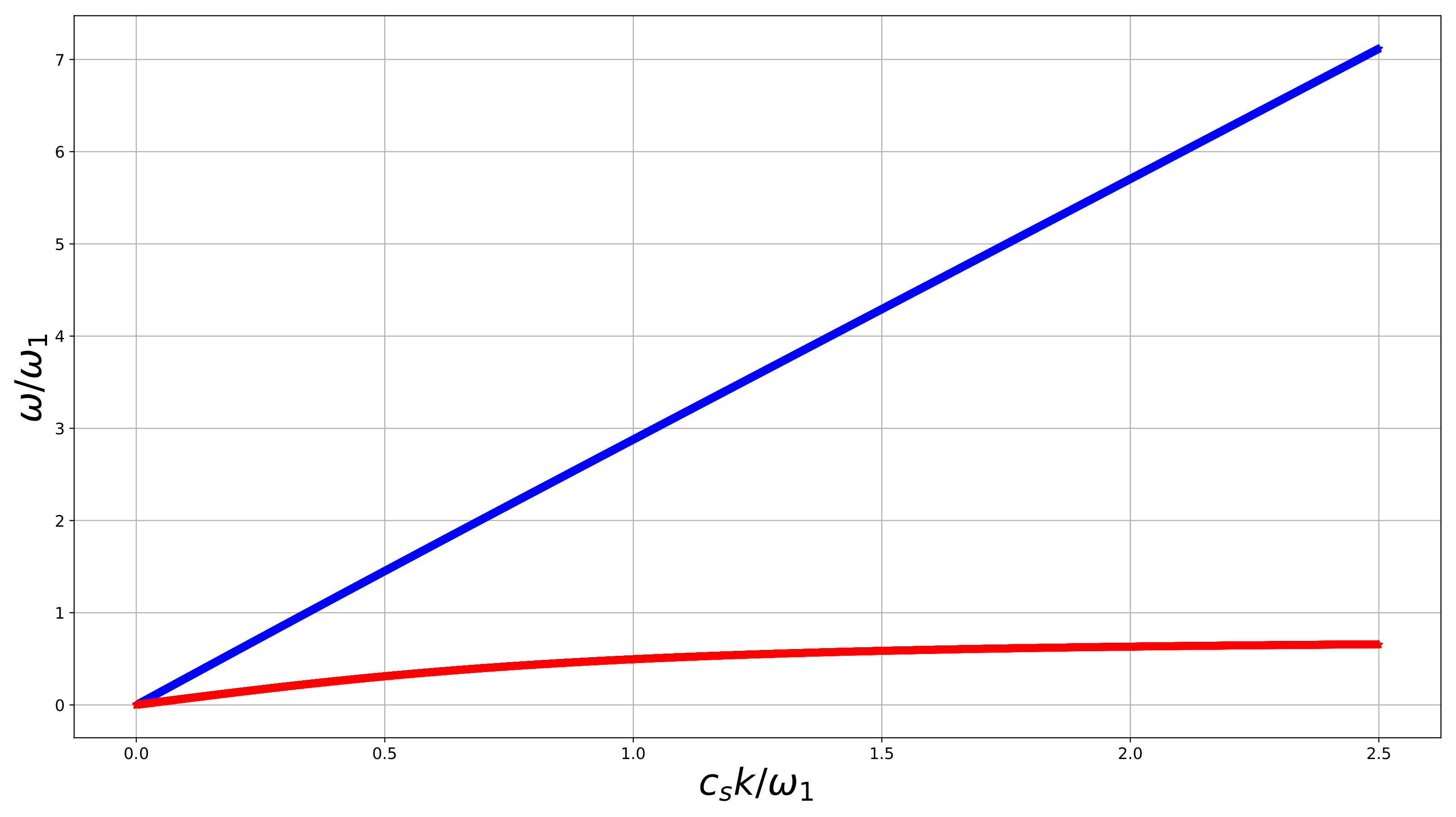
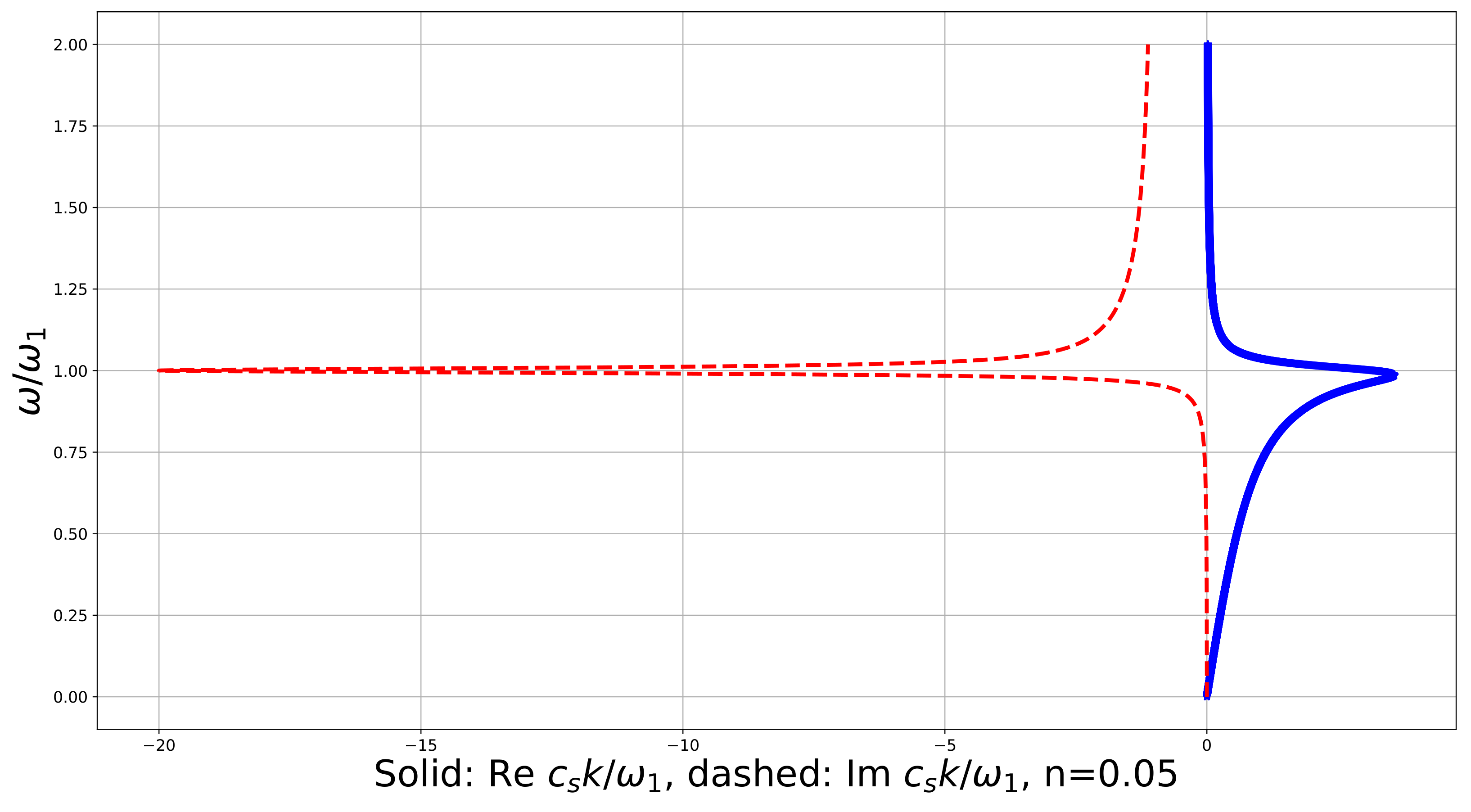
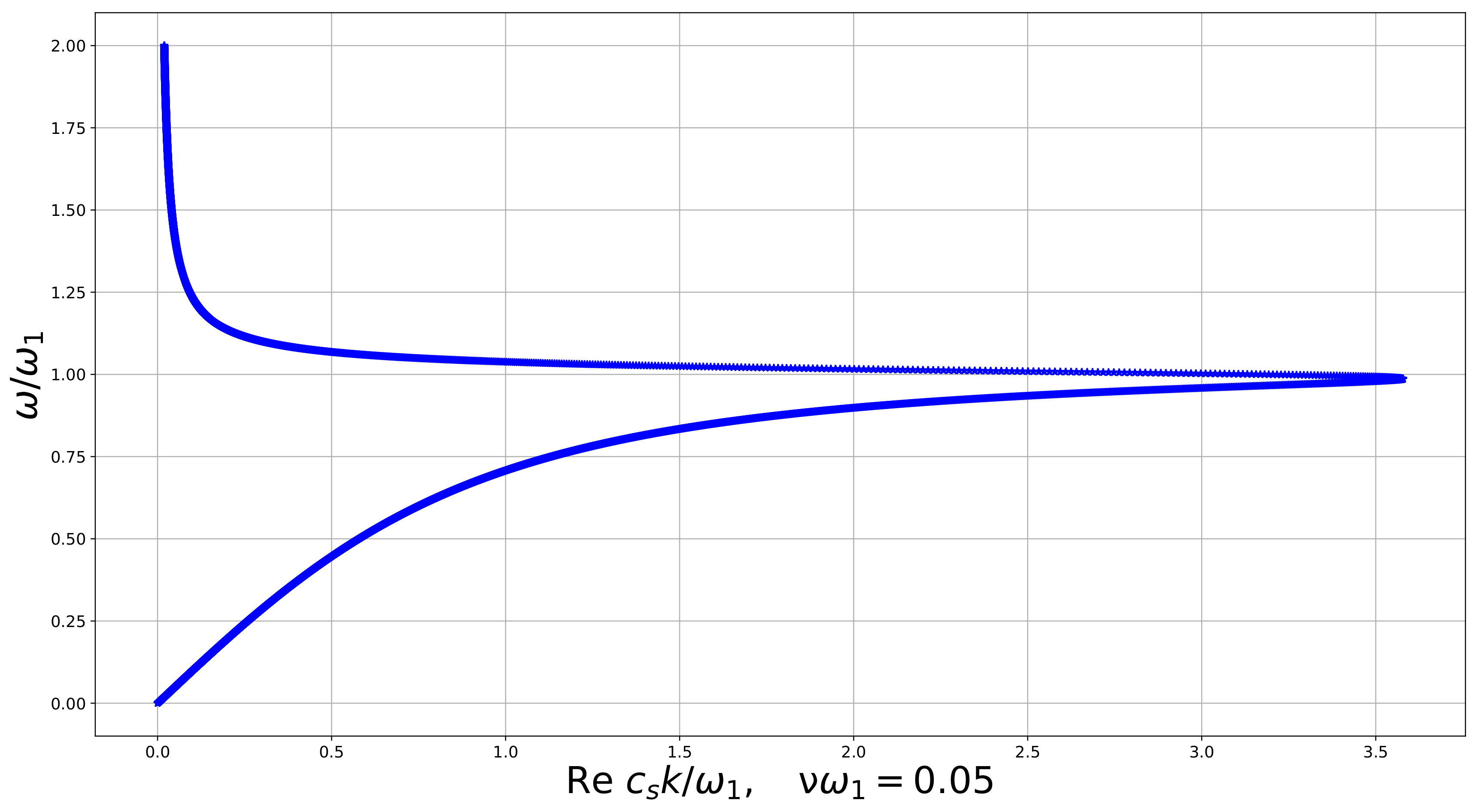
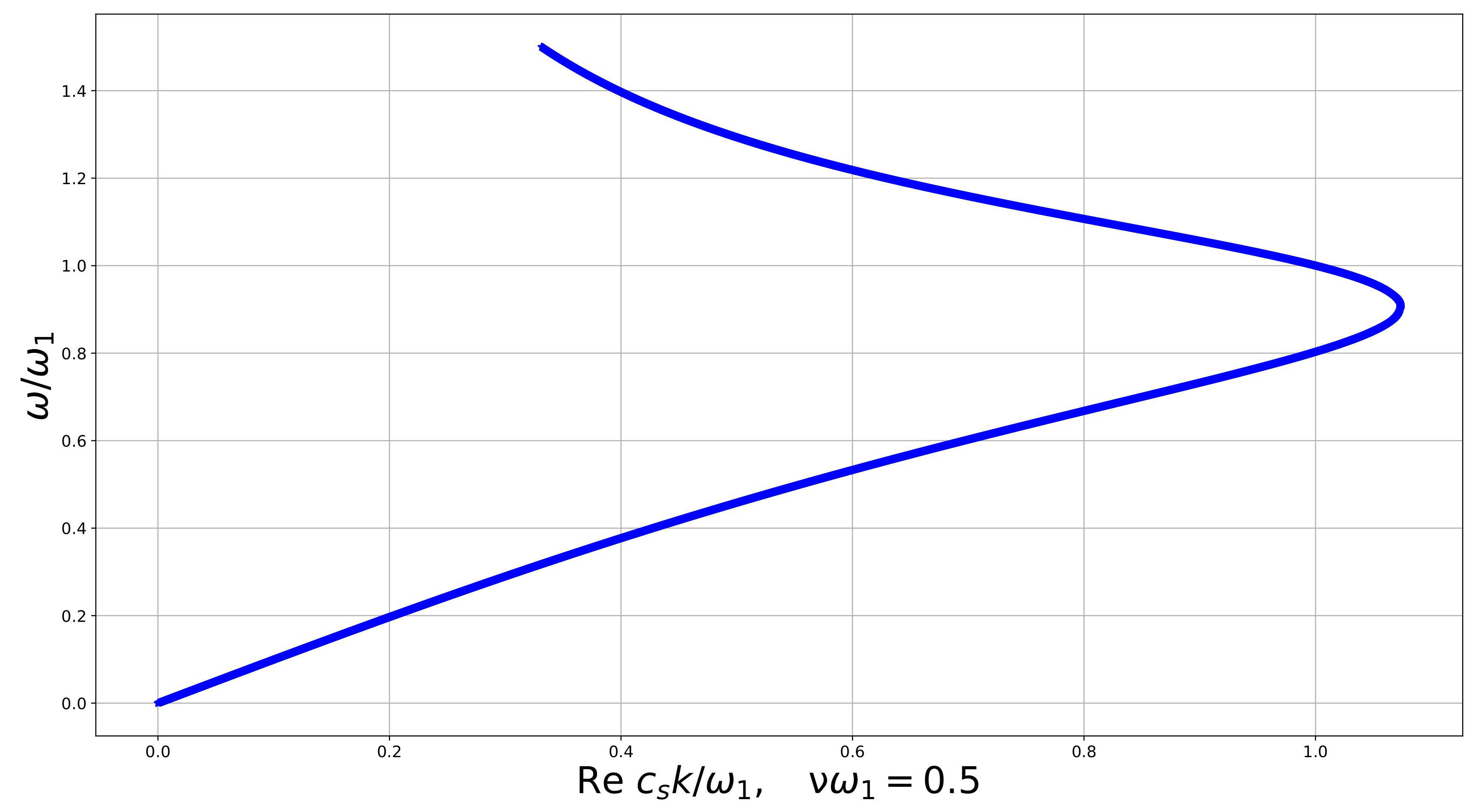
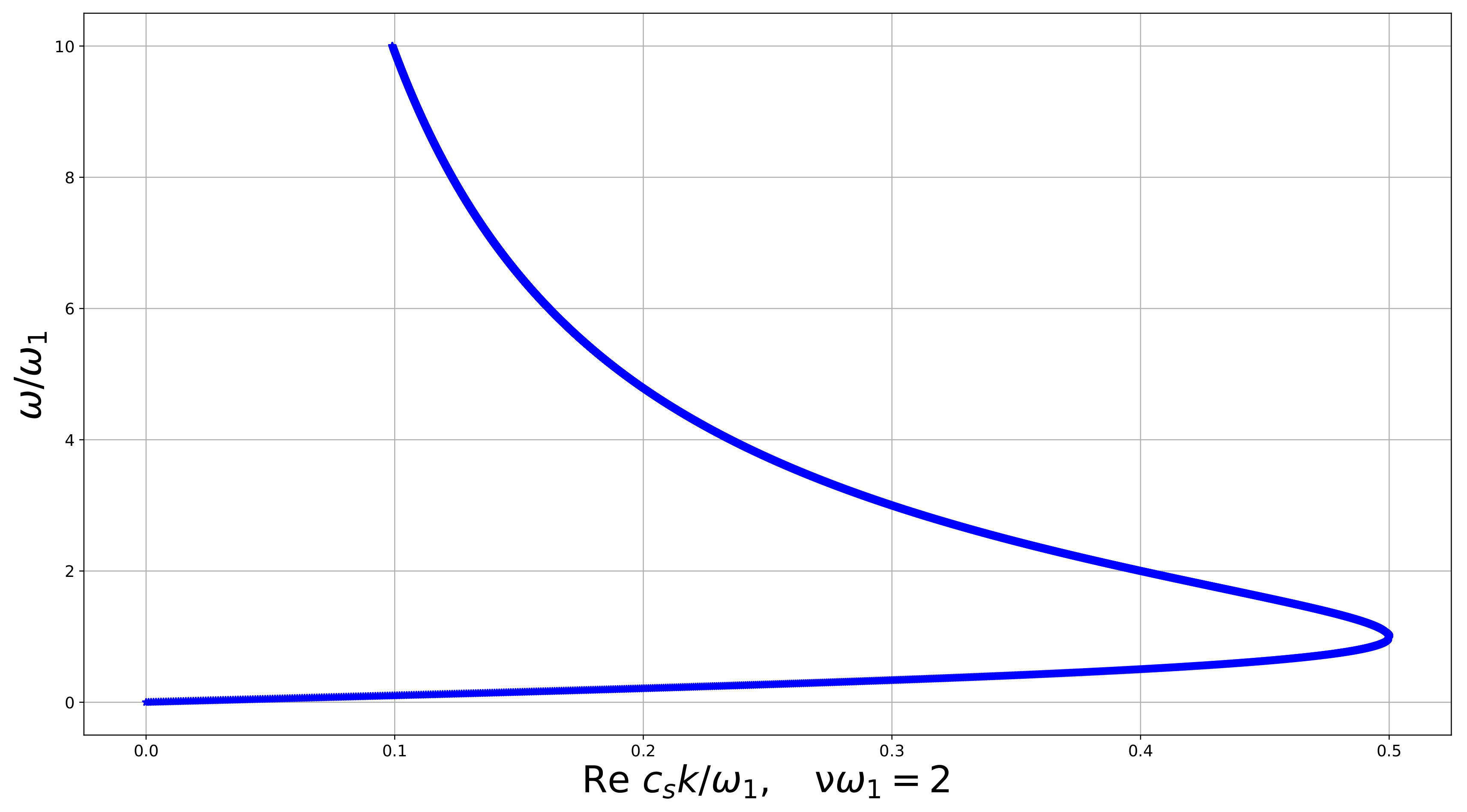


| Medium | Wave Properties | Classification |
|---|---|---|
| Isotropic elastic | Classical compression wave. Highly dispersive shear–rotational wave, which does not propagate above boundary frequency (large wavenumber limit) | single negative acoustic metamaterial at |
| Elastic with a simplest axisymmetric coupling between shear and volumetric strains | Shear wave (same as in isotropic case), non-dispersive compression wave (for with classical velocity or with larger velocity), and two mixed waves coexist. One mixed wave is weakly, the other is strongly dispersive with a boundary frequency depending on the propagation direction | single negative acoustic metamaterial with respect to the shear wave at and with respect to the slower mixed wave at |
| Viscoelastic isotropic | Classical compression wave. Highly dispersive shear–rotational wave. Its dispersion branch has a decreasing part and large velocity at large ; there is a minimal wavelength, has at least one maximum; at small the wave tends to classical; band gap disappeared, in its domain dissipation enhances wave propagation, at attenuates the wave, at does not influence the attenuation Logarithmic decrement is proportional to at low and high frequencies (proved analytically and checked numerically). has only one maximum, the group velocity there is infinite, this point separates zones of normal and anomalous dispersion. has one maximum (at small n) or does not have, it depends on n in a complex way (checked numerically). | Double negative acoustic metamaterial with respect to the shear wave above a certain frequency |
© 2020 by the authors. Licensee MDPI, Basel, Switzerland. This article is an open access article distributed under the terms and conditions of the Creative Commons Attribution (CC BY) license (http://creativecommons.org/licenses/by/4.0/).
Share and Cite
Grekova, E.F.; Porubov, A.V.; dell’Isola, F. Reduced Linear Constrained Elastic and Viscoelastic Homogeneous Cosserat Media as Acoustic Metamaterials. Symmetry 2020, 12, 521. https://doi.org/10.3390/sym12040521
Grekova EF, Porubov AV, dell’Isola F. Reduced Linear Constrained Elastic and Viscoelastic Homogeneous Cosserat Media as Acoustic Metamaterials. Symmetry. 2020; 12(4):521. https://doi.org/10.3390/sym12040521
Chicago/Turabian StyleGrekova, Elena F., Alexey V. Porubov, and Francesco dell’Isola. 2020. "Reduced Linear Constrained Elastic and Viscoelastic Homogeneous Cosserat Media as Acoustic Metamaterials" Symmetry 12, no. 4: 521. https://doi.org/10.3390/sym12040521
APA StyleGrekova, E. F., Porubov, A. V., & dell’Isola, F. (2020). Reduced Linear Constrained Elastic and Viscoelastic Homogeneous Cosserat Media as Acoustic Metamaterials. Symmetry, 12(4), 521. https://doi.org/10.3390/sym12040521





